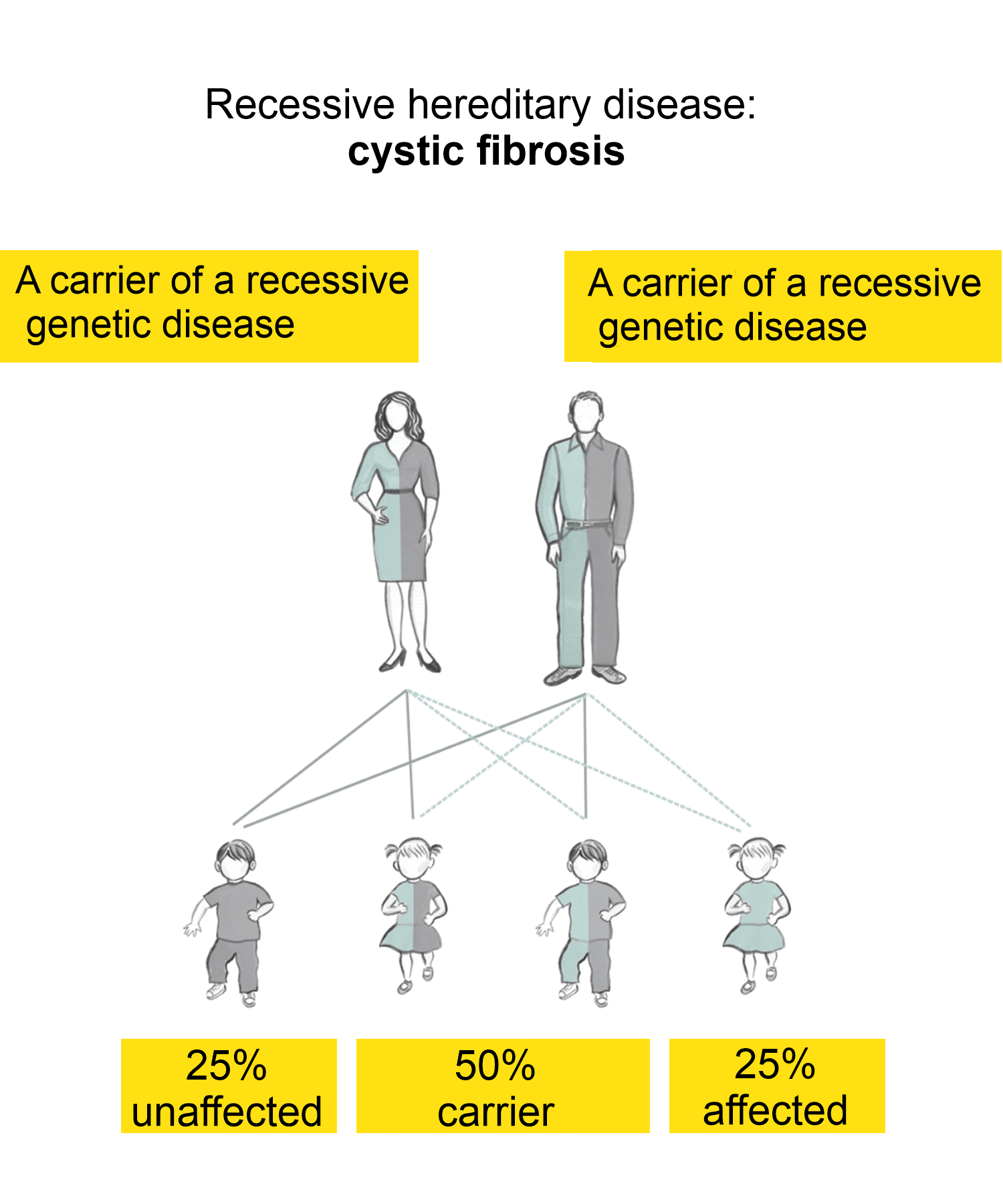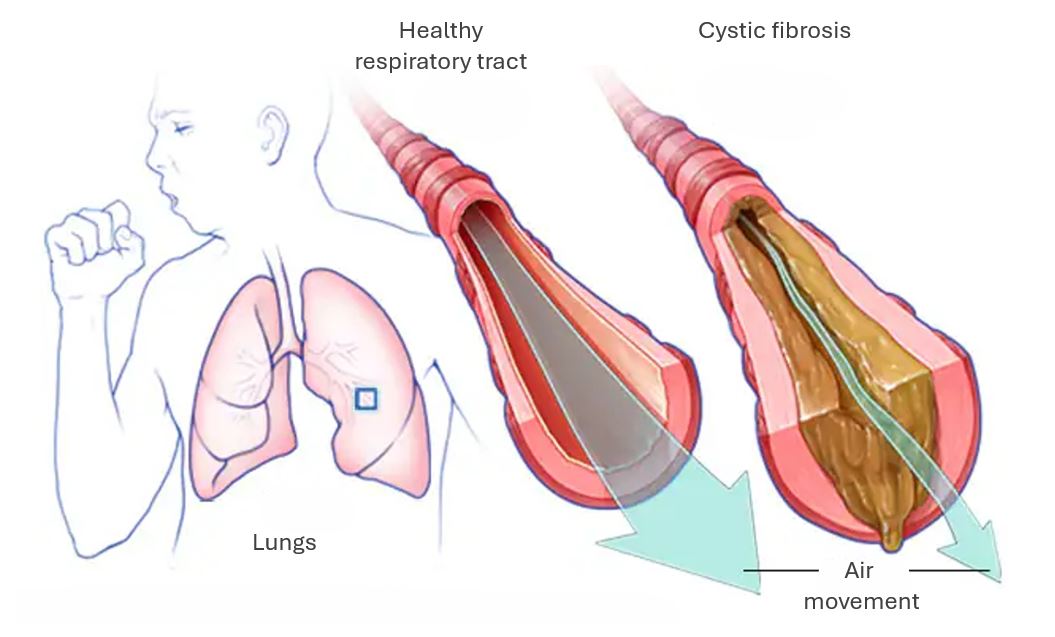At the Fetal Ultrasound Center, it is possible to prenatally detect cystic fibrosis in the fetus, as a rare but life-changing disease.
What is Cystic Fibrosis?
Cystic fibrosis is the most common life-shortening hereditary disease caused by a mutation in a single gene and is inherited in an autosomal recessive manner. This means that an individual must receive an altered copy of the gene from both parents. The disease is characterised by impaired salt and water movement in cells, which leads to the accumulation of thick mucus in the respiratory and digestive organs.

In Estonia, the incidence of cystic fibrosis is approximately 1 in 7,500 newborns. Each year, about two children in Estonia are diagnosed with cystic fibrosis, and currently, around 63 individuals are registered as living with this condition. Historically, the natural course of this disease limits life expectancy to about five years, although survival rates have improved in recent years. Currently, the average life expectancy for a child diagnosed with cystic fibrosis in Estonia is estimated to be 15.9 years. Most men with cystic fibrosis are infertile, and women may also experience infertility and pregnancy complications.
Cystic fibrosis is caused by a mutation in the CFTR gene located on chromosome 7, which disrupts the balance of minerals and water in all body secretions, leading to increased viscosity. Typically, viscous secretions move through gland ducts to perform their functions, but in cystic fibrosis, these ducts become clogged with thick, sticky secretions. This blockage can result in chronic inflammation and infections, primarily affecting the lungs and pancreas.
How Does the Disease Manifest?
Cystic fibrosis symptoms can appear at any age, but they most commonly emerge in children during their early years. Classic signs include chronic cough, lung disease due to oxygen deficiency from blocked airways, digestive issues, and difficulties in gaining weight.
Diagnosis
In 2023, a newborn screening project was launched in Estonia to detect cystic fibrosis by measuring levels of immunoreactive trypsinogen (IRT) and pancreatitis-associated protein (PAP). Over two years, 2,000 tests were conducted in the pilot program, resulting in the identification of two children with cystic fibrosis. Additionally, one child with a negative screening result was later diagnosed based on clinical symptoms.
Treatment
Cystic fibrosis requires complex, lifelong treatment focused on relieving symptoms and preventing complications. Patients face a higher risk of severe lung and gastrointestinal infections. While children with cystic fibrosis typically have standard immune systems, their respiratory and digestive tracts are more susceptible to infections, making vaccinations particularly important.
Cystic fibrosis is primarily caused by a mutation in the CFTR gene, which encodes a chloride channel in cell membranes. CFTR modulators can enhance the function of this protein and significantly improve patient outcomes. Starting July 1, 2024, individuals in Estonia with cystic fibrosis will be able to access the medication Kaftrio, if indicated, fully funded by the Health Insurance Fund. This treatment, which previously cost patients 16,000 euros per month, represents hope that patients can live into adulthood and beyond.
What Can You Do?
Cystic fibrosis is a serious condition, but early diagnosis, increased awareness, and symptomatic treatments have considerably improved the quality of life and prospects for those affected. The best approach is to prevent cystic fibrosis, which can be done both during pregnancy planning and while pregnant.
The Fetal Ultrasound Centre offers various tests for the prenatal detection of cystic fibrosis in the fetus, including:
- GeneScreen Test: This test allows prospective parents to see if they both carry the cystic fibrosis gene, which could lead to the disease in their child.
- GeneSafe Test: This test can identify whether a pregnant woman has an increased risk of having a child with cystic fibrosis early in her pregnancy.
- Amniocentesis: This invasive diagnostic method assesses whether the fetus has cystic fibrosis and can also identify other rare diseases, including Duchenne and Becker muscular dystrophy, spinal muscular atrophy, and Fragile X syndrome.

